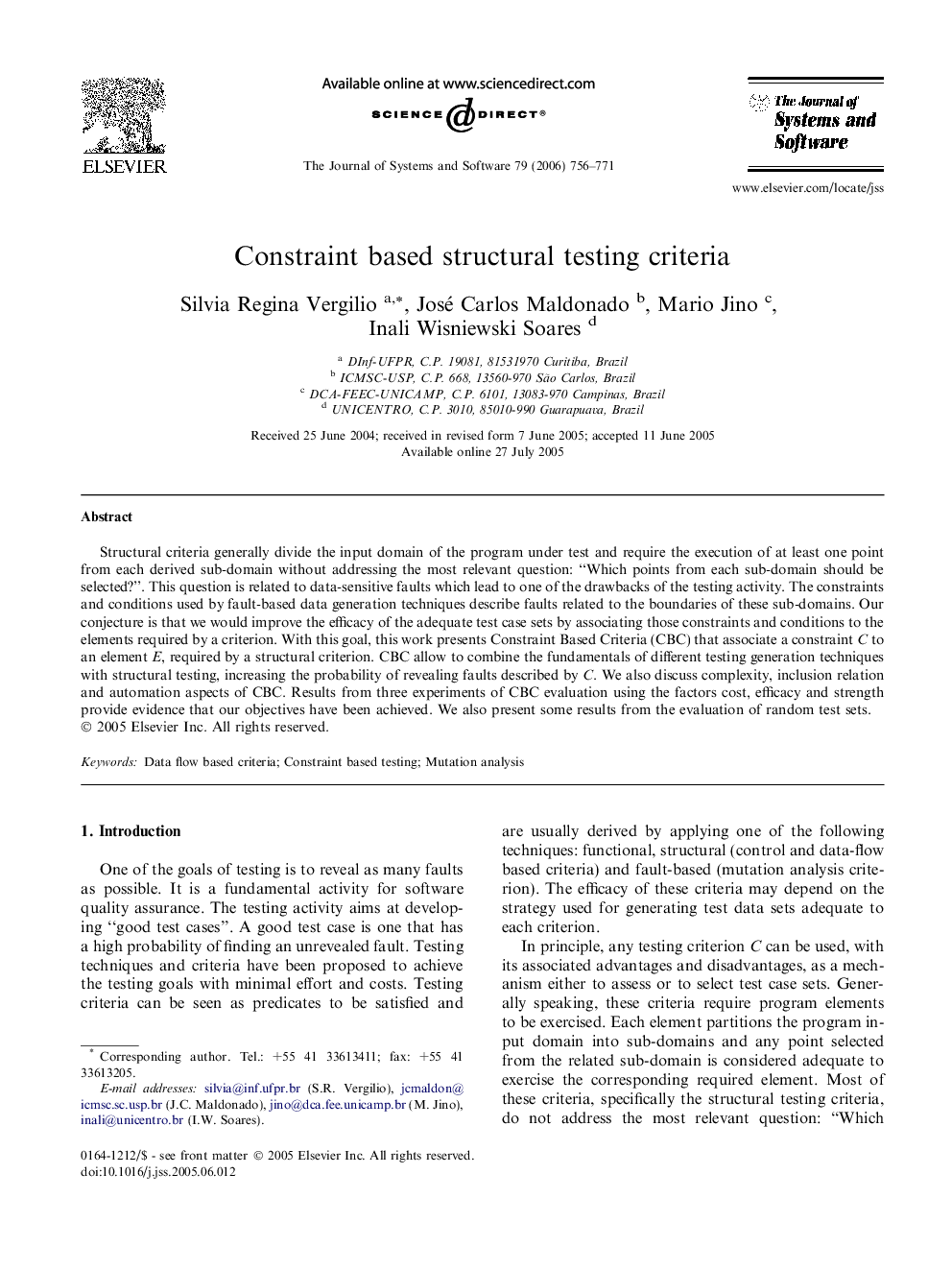| Article ID | Journal | Published Year | Pages | File Type |
|---|---|---|---|---|
| 494301 | Journal of Systems and Software | 2006 | 16 Pages |
Structural criteria generally divide the input domain of the program under test and require the execution of at least one point from each derived sub-domain without addressing the most relevant question: “Which points from each sub-domain should be selected?”. This question is related to data-sensitive faults which lead to one of the drawbacks of the testing activity. The constraints and conditions used by fault-based data generation techniques describe faults related to the boundaries of these sub-domains. Our conjecture is that we would improve the efficacy of the adequate test case sets by associating those constraints and conditions to the elements required by a criterion. With this goal, this work presents Constraint Based Criteria (CBC) that associate a constraint C to an element E, required by a structural criterion. CBC allow to combine the fundamentals of different testing generation techniques with structural testing, increasing the probability of revealing faults described by C. We also discuss complexity, inclusion relation and automation aspects of CBC. Results from three experiments of CBC evaluation using the factors cost, efficacy and strength provide evidence that our objectives have been achieved. We also present some results from the evaluation of random test sets.
